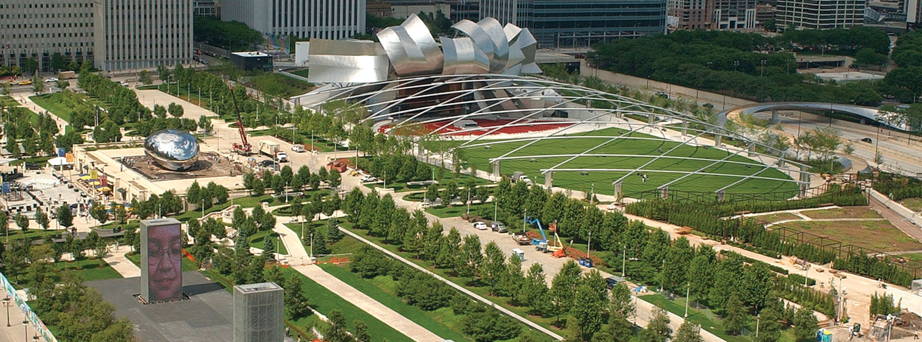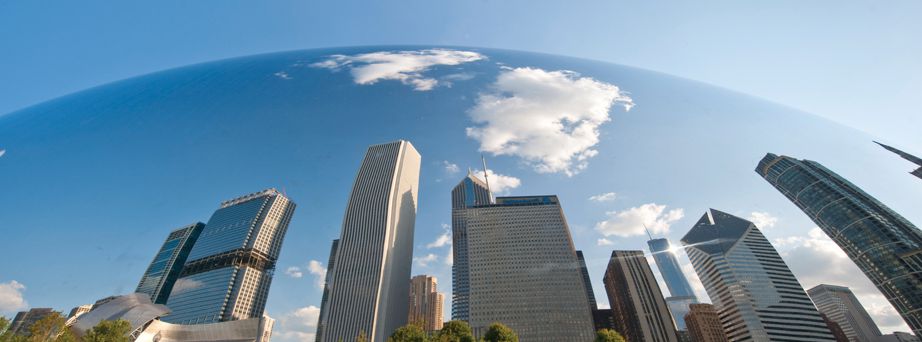Speaker Instructions
Your presentation has two components: a three-minute pitch and an 80-minute interactive presentation. This will afford you the opportunity to present your work to a large audience (there are only three parallel speaking sessions) and to interact more deeply with those who are interested to learn more.
(Please note that papers not presented at both the oral and interactive sessions will not be transferred to IEEE for archiving.)
The Pitch

View of a typical speaking session. The speaker on the left, in the spotlight, is speaking, while the next speaker on the right is setting up his laptop. The current speaker's laptop is projected to the main (center) screen, while a second projector projects the talk's summary slide (submitted with the final paper) so the basic information on the current talk is always visible. A monitor at each podium shows the speaker what is (or will be) projected to the center screen. After three minutes, the spotlight shifts to the speaker on the right, whose microphone becomes live and whose laptop now controls the center screen. Not shown: a 3-minute countdown timer. (Note: this is not an actual speaking room, but a schematic of the setup. The Palmer House speaking rooms are large ballrooms.)
You can see examples of 3-minute pitch talks here and here.
Setup
For the speaking sessions, you will come to the front of the room at the beginning of the session. While the speaker before you is speaking, you will have three minutes to set up your laptop. (VGA connection will be provided.) There will be a volunteer at the podium to help you if you need it. There will be a local monitor on the podium that shows what will project from your laptop to the screen, so you can be sure that the audience will see what you see on the monitor. There will be no audio hookup for your computer.
When the previous speaker finishes, their microphone will go dead, yours will become live, your monitor will be projected to the main screen, and the spotlight will shift to you. Your three minutes starts right then and you can begin your talk.
If you fail to connect during your three-minute setup time (which should be very rare), a secondary screen will always project the summary slide you submitted including the title of your paper and the authors' names with the speaker underlined. Again, your three minutes starts right then and you should complete your talk within the allotted time, only referring to this summary slide. Practice rooms will be available where you can test your connection before the session.
Presenting
You will have only three minutes, but there will be no changeover time and no questions, so you should be able to get your message across so the audience will know if they want to learn more and visit your display during the interactive session. Use the time wisely! Questions and discussions will happen during the interactive sessions.
Rules
- You must finish in three (3) minutes! Plan on 2:50 to be safe. After three minutes, your microphone will go dead and your laptop will no longer be projected, and you will get the figurative (maybe literal) hook!
- Your talk will be video-recorded. These recordings will appear along with the paper in IEEE Xplore.
Suggestions
- PRACTICE! This is a new format for many of us, and you will need to practice a number of times to get your message across effectively in only three minutes.
- You will not be introduced. Give your name and the title of your paper.
- Your presentation is an advertisement for your paper, so focus on insights rather than details.
- Avoid spending much time on related work.
- Consider giving an application/motivation of your work, the main result, and one piece of technical “meat” (e.g., a theorem, a design principle, an equation, etc.) that will help the audience understand the methodology and the depth of the work, understanding that there will not be time for all the details.
The Interactive Session
After your speaking session, in the next session you will move to the interactive salons, where attendees can ask you questions and engage in discussion in an 80-minute interactive session. You will have a 42” LED 1920x1080 display to project your laptop (VGA connection provided). There will also be a fixed sign with the title and authors of your paper so attendees can find you easily.
Guidelines
- If you have more than one author for your paper, we recommend you have two authors at your interactive station. This allows one author to walk around and talk to other authors of thematically-related papers while the second author presents the work.
- If there are people waiting to talk to you, limit your discussion with any one attendee. Schedule a time later to get together to discuss in more detail.
- You should have several slides prepared that get into the details, but do not plan to give full 15-minute one-way talks. The format of the interactive session should encourage lively discussions between paper authors and audience members. The format of the interactive session is not to repeat the same 15-min one-way talk over and over until the end of the session.
Copyright © IROS 2014. All Rights Reserved.






















